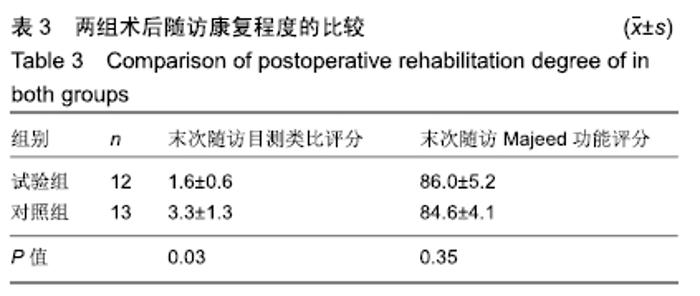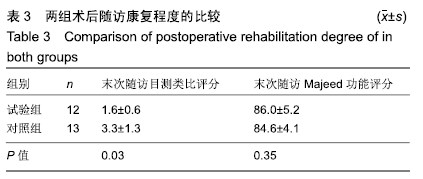[1] MATTA JM, ANDERSON LM, EPSTEIN HC, et al.Fractures of the acetabulum. A retrospective analysis.Clin Orthop Relat Res.1986; (205):230-240.
[2] 徐莘香,刘一,金安.髋臼骨折的切开复位内固定治疗[J].中国骨与关节损伤杂志,2001, 16(3):175-177.
[3] ROMMENTS PM.The Kocher-Langenbeck Approach for the Treatment of Acetabular Fractures.Eur J Trauma.2004;30(4):265-273.
[4] 张奉琪,潘进社.骨盆骨折血管损伤的解剖学基础及临床[J].中国矫形外科杂志,2003,11(14):985-987.
[5] SAITO T, KUROKAWA Y, TAKIGUCHI S, et al.Accuracy of multidetector-row CT in diagnosing lymph node metastasis in patients with gastric cancer.Eur Radiol.2015;25(2):368-374.
[6] 罗群强,李清锋.螺旋CT三维重建技术在髋臼骨折中的应用论著[J].临床和实验医学杂志,2011,10(17):1322-1323.
[7] TEMPLEMAN DC, SIMPSON T, MATTA J M.Surgical management of pelvic ring injuries.Instr Course Lect.2005;54:395-400.
[8] 谢逸波,李培浩,余沛聪.手术治疗髋臼后壁骨折的疗效及影响因素[J].实用骨科杂志,2018,24(9):773-777.
[9] TORNETTA P 3RD.Displaced acetabular fractures: indications for operative and nonoperative management.J Am Acad Orthop Surg. 2001;9(1):18-28.
[10] 胡振宁.全髋关节表面置换术治疗髋臼骨折内固定术后继发创伤性骨关节炎效果观察[J].河南外科学杂志,2018,24(6):139-140.
[11] ROMMENS PM, HESSMANN MH. Acetabulum fractures. Unfallchirurg. 1999;102(8):591-610.
[12] ZENG C, XING W, WU Z, et al.A combination of three-dimensional printing and computer-assisted virtual surgical procedure for preoperative planning of acetabular fracture reduction. Injury.2016; 47(10):2223-2227.
[13] 汪光晔,张春才,许硕贵,等.基于真实CT数据骨科虚拟手术计划在髋臼骨折手术中的运用[J].中国组织工程研究,2011,15(43):7987-7990.
[14] 14.李政,卢启贵,黄东红,等.3D打印技术结合虚拟手术与传统手术在治疗复杂胫骨平台骨折的应用疗效比较[J].中国伤残医学,2017,25(10): 35-38.
[15] 曹桂平,张明娇,刘非,等.Arigin 3D Pro软件与Mimics软件三维重建模型的精度研究[J].中国组织工程研究,2018,22(15):2384-2389.
[16] CIMERMAN M, KRISTAN A. Preoperative planning in pelvic and acetabular surgery: The value of advanced computerised planning modules.Injury.2007;38(4):442-449.
[17] CITAK M, GARDNER MJ, KENDOFF D, et al.Virtual 3D planning of acetabular fracture reduction[J]. J Orthop Res.2008;26(4):547-552.
[18] FORNARO J, KEEL M, HARDERS M, et al.An interactive surgical planning tool for acetabular fractures: initial results.J Orthop Surg Res.2010;5:50.
[19] FENG X, FANG J, LIN C, et al.Axial perspective to find the largest intraosseous space available for percutaneous screw fixation of fractures of the acetabular anterior column.Int J Comput Assist Radiol Surg.2015;10(8):1347-1353.
[20] LEE JM, KIM YK, LEE YH, et al.Percutaneous Radiofrequency Thermal Ablation with Hypertonic Saline Injection: In Vivo Study in a Rabbit Liver Model.Korean J Radiol.2003;4(1):27-34.
[21] MATTA JM. Fractures of the acetabulum: accuracy of reduction and clinical results in patients managed operatively within three weeks after the injury.J Bone Joint Surg Am. 1996;78(11):1632-1645.
[22] 宋劭晨.改良Stoppa入路结合髂窝入路治疗复杂四边体骨折的临床疗效[D].长春:吉林大学,2017.
[23] 杜书军.改良Stoppa入路与髂腹股沟入路行髋臼骨折切开复位内固定术的对比分析[J].中国伤残医学, 2017,25(1):24-25.
|







